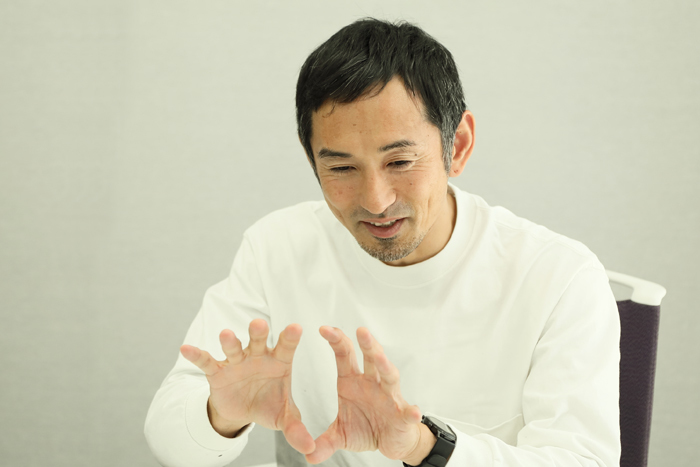A serial interview column where Mr. Dai Tamesue freely discusses "things on his mind right now." The only set theme is "What is autonomy? What is tolerance?" Mr. Tamesue shares his thoughts on various "things on his mind" in response to the mysterious "interviewer's" unexpected prompts. Well then. What kind of stories will emerge this time...? Stay tuned.
──We've been discussing the theme "What are numbers?" and this interview marks the final installment on that topic. Thank you for joining us.
Tamesue: Likewise, thank you for having me.
──At the end of our last session, I posed a question: "What is the relationship between quantitative analysis and qualitative analysis? How should they work together?" It's common in advertising agencies—ideally, you'd have a team where a numbers-savvy marketer and an artistically inclined creator click perfectly. You'd get a team like Da Vinci, with both left and right brains firing on all cylinders.
Tamesue: Hearing your question immediately reminded me of the book "Art Predicts the Future of Capitalism." What stuck with me was the explanation: "Why do Van Gogh's paintings command such astronomical prices? It's solely because artworks have no utility."
──Not because they have utility, but because they lack utility?
Tamesue: Once you understand what something is useful for, a price ceiling forms. Take a washing machine for clothes—there's a general market price for washing clothes, right? So it won't reach absurd prices. Art, on the other hand, is sold and bought based on "context." You don't need it to function. That means there's no real market price, so the ceiling is sky-high. Of course, prices can fall too.

──One person might want that satisfaction for 3 billion yen. Another says they'll pay 5 billion yen. That's how it goes. You could call it expensive, or you could call it priceless. And even if everyone else says they don't need it, if one person offers 5 billion yen, that's 5 billion yen.
Tametsu: That's where the "storyteller" becomes crucial. In the painting analogy, it's someone like a gallery owner or curator.
──Someone who can speak to the painting's value not in "money" but in "context," right?
Tamesue: At places like the Louvre or the British Museum, the order in which artworks are displayed is said to be extremely important.
──So it's saying, "Please view the works in this order"? In a way, that's also the storyteller's job.
Tamesue: They're presenting a "value system" as a measuring stick. Whether "quantitative vs. qualitative" is good is also decided by that "value system" standard. Museums and art galleries seem to have the role of displaying and controlling that value system. In America, that value system is often "the new," whereas in Europe, it's often "the essential."
──In advertising, the term "N1" is used a lot lately. Good things rarely emerge from majority rule or consensus. I've experienced many times how campaigns start moving forward, regardless of quantitative or qualitative factors, when everyone jumps on board with just one person's idea.
Tamura: In any case, it's something Japanese people are very bad at. Many tend to shy away from things like "telling a story" or "everyone jumping on board with one person's idea."
(Interviewer: Web Dentsu Inc. Editorial Department)
From Hibi, Athlete Brains Production Team
The third installment on numbers. It shifted beyond quantitative vs. qualitative to a third axis: "values." Mastering the "slow" and "fast" pacing, it concluded with a truly new axis—a fitting conclusion for Mr. Tamesue. In corporate business activities too, we often debate whether Plan A or Plan B is better, or whether the pros and cons (Editor's note: logically evaluating two options) are sound. When considering the purpose, the question often arises: which is better? But beyond that, proposing an α axis—neither A nor B—might be the optimal move. Athletes may be the ones who can propose such unknown possibilities from different angles and perspectives. When seeking co-creation with athletes, please consider Athlete Brains.
Athlete Brains Production Team Dentsu Inc. / Akinori Hibi (3CRP) · Genta Arahori (Late Bureau)
For details on "Athlete Brains," a team centered around Dai Tamesue that leverages athletes' cultivated knowledge to solve societal and corporate challenges, click here.











